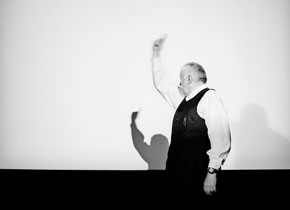
‘A cold sort of ecstasy—that’s what he says his films are supposed to trigger. And they do. Anyone who’s ever seen the disturbingly immaculate works of Peter Kubelka in a theatrical setting will agree. In fact, that’s the only way you can see his films since there are no digital copies available, apart from those pirated YouTube clips, which don’t give you the faintest idea what Kubelka’s art is really about.
‘Now, at 78, Kubelka is about to conclude his cinematic career with a multi-faceted international project that’s ambitious even by his standards. A new work called Antiphon forms the center of this adventure. It comes as a surprise: the film, to be released this fall, will be only the eighth entry in the Kubelka filmography—all of them short but highly condensed. In almost six decades he has produced little more than an hour of cinema in total. He brought the bulk of his oeuvre into existence between 1955 and 1966. After that, filmmaking became a matter of decades: the body-art-farce Pause! (77) was unveiled 11 years after Unsere Afrikareise (66); and a full 26 years passed between Pause! and the found-footage-fantasy Poetry and Truth (03), a sarcastic study of TV-commercial banality. Kubelka has taken another nine years to generate Antiphon, which revisits the roots of his own creative history, harking back to one of the pillars of modernist cinema, Arnulf Rainer (60). That stroboscopic film reinvented the medium as sense-attacking, storyless, color- and image-free structuralism, pushing abstraction and minimalism into a paradoxically concrete maximalism. Arnulf Rainer essentially constitutes a rhythmical modulation of the four basic elements of cinema—light and darkness, sound and silence. For six minutes and 24 seconds the film, made out of transparent and black 35mm frames, deafening white noise and the relative silence of the untouched optical soundtrack, shreds the viewer’s nerves—dazzling, roaring, darkening, and hushing in ever-changing metrical variations.
‘The genesis of this drastic little film dates back to late 1958. Kubelka—a judoka, musician, and graduate of the Vienna and Rome film academies—had just invented his metrical cinema by releasing two frantic, radically compressed works, the 90-second Adebar (57) and the 60-second Schwechater (58). Both films were advertising commissions, for a Viennese nightclub and an Austrian beer brand respectively. Using hypnotic loops and syncopated variations in movement, both films proved too formally advanced for their baffled sponsors: Adebar presented rigorous repetitions of a dance scene in silhouette in rapid positive-negative alternations set to a fragment of ancient music from central Africa; the staccato images of Schwechater demonstrated how figurative film, abstract art, and material science could be conjoined. Kubelka rewrote cinema, enumerating all the possibilities of complicating audiovisual rhythms; he created prototypes for films made out of motion and stasis, synchronicity and arrythmia. His clients reacted with indignation for wasting their money, and the rest of the slow-burning art scene in late-Fifties Vienna had no idea what hit them when the lights went up.
‘Ridiculed and insulted, Kubelka quit Vienna, an impoverished 24-year-old artist, and moved to Stockholm where he continued working on his metrical trilogy by typing the black-and-white blueprint of Arnulf Rainer onto thin strips of paper that stood in for the film stock he couldn’t yet afford. Then and there he dreamed up the revolutionary film, hearing and seeing it in his head. In 1959 he came up with its title, an homage to his friend and sponsor, the painter Arnulf Rainer. When the film had its premiere in Vienna in May 1960, the 300-seat theater was packed. Six-and-a-half minutes later only a dozen people were left. “I lost most of my friends because of Arnulf Rainer,” Kubelka recalls.
‘But he never forgot the film’s profound impact—and three years ago he decided to produce a polar-opposite version of it. “I do not want to use digital imagery, which is always ‘enhanced,’ so that you have no choice but to contribute to a worldview in which everything glitters like a commercial. I want to conclude my life’s work with a monument to film.” And so Antiphon was born: all of Arnulf Rainer’s black frames would become white, and its white ones black; all its sections of sound would become silent, and in all its previously silent passages there would be noise.
‘“Antiphon” is a term used in church music to signify the response, the counter- chant, in a choral piece. It’s an appropriate title for a film that will mirror an older one, and it ties in nicely with Kubelka’s idea of cinema as an alternative form of liturgy. “In fact, the antiphon is older than human life,” Kubelka remarks. “Birds, frogs, and cicadas have been communicating that way for millions of years. And it’s also in our every-day communication, in our greeting verbiage, for example, in the repetition of ‘How do you do?’”
‘Something monumental this way comes: Antiphon is part of a larger work called Monument Film, which will be presented in two ways—as a double projection of Antiphon and Arnulf Rainer (side by side as well as superimposed) and as an installation, a sculptural exhibition of the film material. Kubelka considers this endeavor to be a culmination—the finale to his cinematic labors, going out in an appropriately Dionysian way.
‘Ever since word got out a few months ago that Kubelka was working on a new film, high-profile art and cinema institutions around the world have shown a keen interest in presenting Antiphon and Monument Film. It’s not just Antiphon and Arnulf Rainer and the installation that will be on display—Martina Kudlácek’s Fragments of Kubelka, a remarkable new four-hour documentary on the master’s life and visions, will also be exhibited. New York, Kubelka’s adoptive hometown in the Sixties, will be the first place to show the new work. There will in all likelihood also be a theatrical release of Kudlácek’s film at Anthology Film Archives where in 1970 Kubelka installed his Invisible Cinema theater, which today resides in the Austrian Film Museum.
‘Kubelka’s highly distinctive film art is strictly handmade. He no longer needs a camera, or even an editing table. At his home, a spacious old apartment in Vienna’s Innere Stadt (Inner City) crammed with thousands of ethnographic artifacts illustrating his etymology of objects—tiny sculptures, primitive musical instruments, work tools dating back to the early Stone Age—Kubelka explains his artistic formation: “The material itself taught me how to make films.” He’s sitting at his wooden kitchen table, tackling the 35mm film strips with scissors and glue, as if modern film technology had finally lost all its power, and the art of cinema had returned to the way Georges Méliès created his wondrous films. Kubelka proceeds image by image, patiently splicing together clusters of black or transparent frames, providing them with contrapuntal soundtracks of noise or silence, following his score with minute precision. Arnulf Rainer and Antiphon each consist of precisely 9,216 frames. Kubelka has to touch every single one of them. He doesn’t handle the material especially gently, but then he doesn’t have to: film is strong and withstands rough treatment. And in any case, Kubelka loves the traces that time and life leave on film, which ages and changes with each pass through the projector.
‘Not surprisingly, the filmmaker disapproves of the compromised way films are usually shown in theaters. To bring film to life, he says, “you need a setting that allows for total immersion”: no lights other than the screen itself and no plush interiors. And of course, only original versions: “In order to understand a film, even if it contains foreign-language dialogue, you can’t have subtitles. Ever.” Kubelka explains, without a trace of irony: “You can destroy a film in several ways: cut it up, burn it—or subtitle it.” In his ongoing crusade for the correct appreciation of the medium, Kubelka is a veritable film fundamentalist—one of the last of his kind.
‘Jonas Mekas has described Kubelka’s films as “crystalline”—as perfect as elemental matter. In fact, Kubelka sees nature and art as inseparable—as both biological and cosmic. In analog cinema that is based on the rapid alternation of light and dark “you have the break of dawn and nightfall 24 times in each second.” Kubelka follows the principle of maximum reduction, but he wholeheart-edly rejects terms like “experimental” or “avant-garde,” and insists he’s simply making “normal” films. “I never wanted to be radical, only consistent, like a scientist working toward his results. I am not intentionally radical.” Kubelka likes to compare film frames with musical notes; by composing images in series of 16, eight, six, and four he achieves regular harmonic rhythms that spectators can feel in their bones. “The atomos in Greek is the smallest unit, the indivisible—and cinema’s atomos is the single frame. My personal splitting the atom has been to perceive film not as motion but as a quick succession of static units. Arnulf Rainer developed out of a longing for the ‘now’-experience. The ecstasy it induces is the result of concentrating those now-moments.” Cycles and repetitions, he maintains, are the key to our existence. “Time doesn’t exist: we create it by breathing, walking, making love. As a filmmaker if you wish to create your own time, you need tools and machines: the film strip, scissors, and a projector.”
‘There’s an almost religious dimension to Kubelka’s devotion to film. Announcing his new project recently, he wrote: “Ad maiorem pelliculae gloriam in the year of death and resurrection.” In this formulation, cinema’s thin surface becomes God’s stand-in, alone in deserving greater honor. But Kubelka is also able to put things into words that are a little less exalted: his statement ends with a sarcastic declaration of intent to “fly in the face of the digital.” Because times are hard for analog film, Kubelka proclaims that “2012 is film history’s darkest year. The hostile takeover by digital imagery is finally complete. Even though everybody knows how short-lived digital archiving is. But short-term profit is more important. European film companies have even begun to force exhibitors to destroy their old projectors; in order to get digital projection equipment, they have to show proof that they have destroyed the old machinery. The industry wants to kill off the old medium, by any means. I see my Monument Film as a call for patient defiance.”
‘Kubelka’s decision never to make his films available in digital form is set in stone, by the way. He considers analog cinema simply untransferable. Just for the record, he stresses that he’s in no way averse to digital technology; he owns and uses all sorts of electronic devices from a notebook computer to an iPad, which he lovingly refers to as “my portable memory.” It’s just that when it comes to cinema, Kubelka says, the new medium cannot cope—or compete. “Here’s the digital dilemma: all those so-called eternal numbers [in data] still have to reside in matter, in machines. And those machines are short-lived—more so than ever, in fact. Now even Hollywood has started to preserve its productions on film again. There is a hard core to the photographic art that activates ideas and thoughts that no other medium can even remotely touch.”
‘So there is hope, Kubelka concludes with a characteristically dialectical turnaround toward pure optimism: “There is a new global avant-garde working exclusively with photographic film, there is a growing international lab movement backed by thousands of young film artists. The phoenix will rise from the ashes. I do not doubt that in the least.”’ — Stefan Grissemann, Film Comment
____
Stills
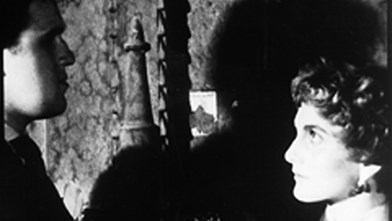
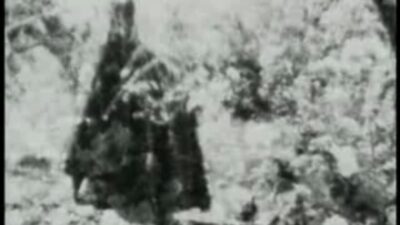






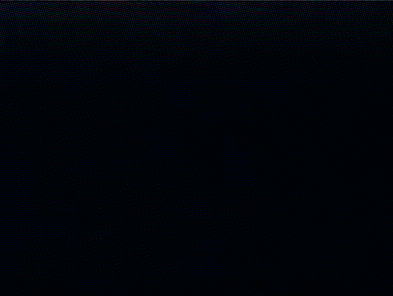




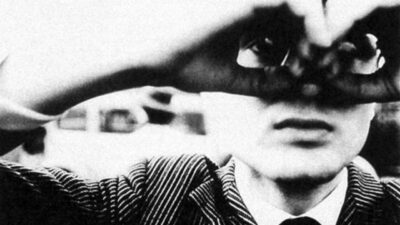


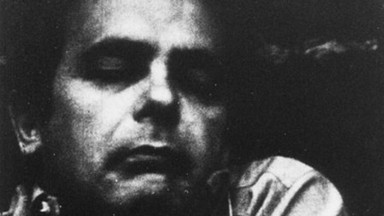


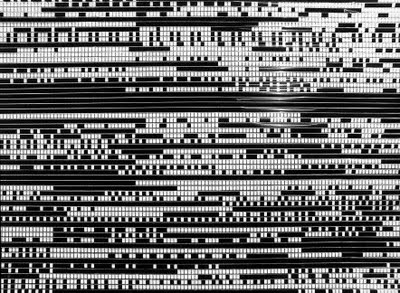
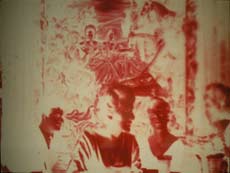







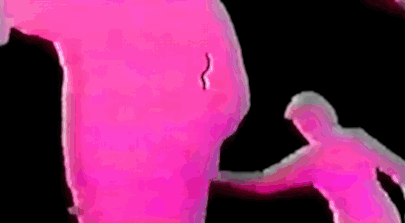



____
Further
Peter Kubelka @ IMDb
‘The materiality of film: Peter Kubelka’
‘A Trip Through Peter Kubelka’s “Unsere Afrikareise”‘
‘I Built Then My Ecstasy: On Peter Kubelka’s Cinema’
‘Fragments Of Kubelka’
‘Cinema: “Food” for Thought’
PK interviewed @ Electric Sheep
‘PETER KUBELKA AND THE END OF FILM: NOT QUITE YET.’
Video: ‘Peter Kubelka and his iPad’, by Jonas Mekas
‘”In die Avantgarde ausgestoßen”‘
‘Inside Celluloid: Peter Kubelka at the Biennale’
‘Modernism’s mirror : Peter Kubelka, painting, and European avant-garde film’
‘Dystopian Ethnography: Peter Kubelka’s Unsere Afrikareise Revisited’
‘Sticking to the essentials: Peter Kubelka’
‘Cinema as Artifact and Event: Peter Kubelka as Curator, Archivist, and Media Theorist’
‘Kubelka & Mekas: master chef and godfather’
____
Extras
Peter Kubelka: Metaphoric Cinema
Peter Kubelka at Drawing Room, Saturday June 16, 2012
HfbK Symposium “Warum gestalten?” – Peter Kubelka
Masterclass Peter Kubelka
Peter Kubelka (1983) by Gérard Courant
_____
Interview
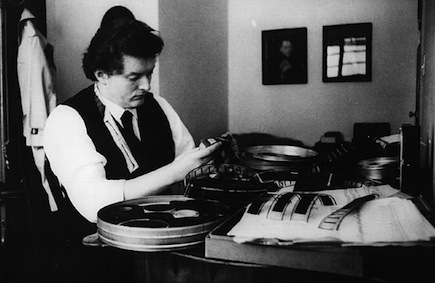
Pamela Jahn: You once said that you’ve lost most of your friends because of your film Arnulf Rainer.
Peter Kubelka: To be honest, I love it when people enjoy my work, but I don’t really care if they leave the cinema. I never really had a relationship with the public. I work for myself. I strongly believe that if I do the best I can, according to my standards, then other people will understand my work. If some people leave when they see my films, whether it is Arnulf Rainer or Antiphon or Monument Film, that really gives me pleasure. It proves that they can provoke a reaction, unlike so-called “art” which has turned into something close to social entertainment, where people will accept anything. My intention when making films is not to entertain, I’m like a scientist who does his research. I made Arnulf Rainer without having a precise idea of what it would look like on the screen, because I couldn’t project it or look at it on an editing table. I was very poor back then and as with almost everything, when you are poor, you are more courageous because you have nothing to lose.
PJ: Your first films Adebar (1957) and Schwechater (1958) were originally commercial films that your clients – a Viennese bar and a brewery – rejected.
PK: I consider my position towards commercial cinema as that of a parasite. Again, it’s a very similar position to that of a scientist or explorer: in order to get where you want to be, you need to have some sort of a relationship with those who pay for the medium. The only way I thought I could do this was to become a criminal – I stole all my films. I accepted commissions, but then didn’t really execute them in the way that those who paid for them had anticipated. What gave me the moral assurance that I was right, was to believe that I gave them something much better than what they really wanted.
PJ: Were you sued by the brewery, Schwechater?
PK: Yes, I was sued and I had to leave the country. I went to Sweden and worked as a dish washer and God knows what else. It was the only way for me to survive. Schwechater was very influential, so I couldn’t stay and work in Vienna. Even the film lab would no longer do prints for me because Schwechater was their client. All in all I paid very dearly for my films, because I lost all my friends, I lost my social and work environment many times. I lived about 14 years of my life without a clue how to survive until I came to America and started teaching.
PJ: You have become a very well-respected lecturer around the world. What do you teach about filmmaking based on your own experience?
PK: What I do in my lectures is to try to help people to find a non-verbal entry into my work by leading them into my thinking. It’s practically impossible to translate the content of films like mine into another medium like language. For instance no one is able to fully explain a piece of music to people who haven’t heard it. For me, speaking is just another medium I use. So, in essence, my lectures are “talks”, which I have pleasure in exercising.
PJ: What was your main intention when making Arnulf Rainer and, subsequently, Antiphon?
PK: Arnulf Rainer is the logical consequence of my previous film travels, so to speak. It’s like when Schönberg started 12-tone music: he didn’t invent it as people always say, rather it was a logical consequence of musical history up to that moment. In the same way, Arnulf Rainer uses the most simple and essential elements that constitute the medium of cinema, namely light and the absence of light, sound and the absence of sound. These four elements are the bare essence of cinema, you cannot go beyond that. In a way you could say with Arnulf Rainer the pole of the cinematic universe has been reached, the point of its most simple form of existence. But it might not be as clear when you look at the film alone. Its counterpart, Antiphon, which I have now made, completes the work in that way. It’s comparable to the philosophy of yin and yang in that both films complement each other to create a whole. This is what I was trying to achieve with Monument Film.
PJ: Did you always intend to make Monument Film after Arnulf Rainer?
PK: The idea was already there in the very beginning, but it was an economic question at the time. All my metric films are only prototypes, where I realise only one phase that defines that kind of cinema. In Adebar, I already had the thought that light and darkness should be equal. I achieved this by showing all the elements in positive and negative for the same amount of time, so by the end of the film the screen has received the same amount of light in all its parts. This was my first metric film, an idea that I then followed up with Monument Film.
PJ: Can you expand on the role of symmetry in your work?
PK: We are celebrating symmetry every second of our life. We also have this concept of completion. The Asians show this phenomenon in yin and yang. Yin is a form, and yang completes it into a circle. In music it is the syncopation. When you project Antiphon after Arnulf Rainer, after some time into Antiphon, you start thinking of Arnulf Rainer; you start feeling that Antiphon is very intimate with Arnulf Rainer. If you project them both side by side – at the same time – you will always have one side dark and the other side light. So, in a way, there is light all the time in each film. In Monument Film, they are projected one on top of the other, and theoretically, there will be a continuous white light. But in practice it’s not, because in analogue cinema there aren’t two projectors alike, nor two sound speakers, so in its imperfection it expresses the materiality of the medium. With Monument Film, I wanted to create a memorial to cinema that explains the materiality of film.
PJ: You once said that you can destroy a film in several ways: cut it up, burn it – or subtitle it.
PK: Subtitling films is somewhat a poisoned medicine. The subtitles become the strongest visual element that appears on the screen and the film becomes a vague optical event in the background which you have to disregard in order to read the subtitles. In my view, subtitling a bad film doesn’t destroy much. But with a good film, everything on the screen is important and you have to use all your attention to concentrate on what you see and hear without getting distracted by the subtitles.
Of course when I watch Japanese or Chinese films without subtitles, I lose something, but on the other hand, I see the film. When you travel to China and you go to a restaurant and you look at the Chinese people sitting there, talking and eating, they don’t have subtitles. This is what life is. You lose something if you don’t understand the language, but you have a real message from another culture. I remember the first film I saw by Carl Theodore Dreyer was without subtitles, and I could not speak a word of Danish, so I decided I had to learn Danish in order to understand the film.
PJ: In 1964, you founded the Austrian Film Museum in Vienna together with Peter Konlechner. What kind of films did you want to collect and show?
PK: I was always in favour of those films which broadened human consciousness. This part of film history is not written by the industry, of course. Mainstream feature films today are exactly as they were in the 1930s, they are an imitation of 19th century melodrama. Actors, story, dialogue… and in the background music which is mood-making and tells you what to feel. This is so boring. That is the political side – or the economic side – of filmmaking, but it is not what film has achieved. It is the same in literature; James Joyce’s Ulysses was a bestseller, and it changed human thinking. There are also such works in cinema and these are the films I wanted to present in Vienna.
PJ: When you came to New York in the late 1960s you soon became friends with Jonas Mekas and got involved in the foundation of the Anthology Film Archives…
PK: Yes, Jonas and I became friends, because we lived in a similar situation. We were oppressed by Hollywood and the unions. In the middle of all this there was France, with the flourishing Nouvelle Vague, which we both despised because it is a bastard cinema: it pretends to be free, but in reality it is commercial. These filmmakers were brought up by liberal producers and distributors, who said, “Well Mr Godard, if you express those ideas, I don’t care, but let’s make it ninety minutes, let’s have a nice girl in the lead, and let’s have an exemplary, palatable form for the public.” So it is a tamed dog whose leash is a little longer than others.
PJ: You also designed Anthology’s screening space based on your concept of the “Invisible Cinema”.
PK: For me, the idea of a cinema is a machine, not a place of entertainment. It’s a machine that aims to bring the work of the author to the public with the fewest disturbances. The ideal cinema would be a black space in which you don’t even feel that there is a space. You should only feel that it’s black, and the only element of reference would be the screen and what happens on the screen.
PJ: Are you resigned to digital technology taking over cinema?
PK: Personally, I have vowed not to transfer my films to digital. But it is frustrating, as many people cannot see my films because the institutions have abandoned analogue projection. Many film archives should concentrate on preserving film reels but most believe that they have to preserve the content over the material.
When photography came, people thought painting would end. When film came, people thought theatre would end. Certain things are just not the most advanced medium any more, but they still go on. You only have to understand that cinema has a core, which cannot be supplanted by another medium; if you understand that cinema can do things that no other medium can, then it cannot be abandoned.
PJ: Do you want to make more films?
PK: I think Monument Film is the completion of what I wanted to achieve with the medium, I have no wish to go further than that. As I have said, I feel more like a scientist or an explorer than an entertainer; as an entertainer I could think of variations… but I have never entertained with my films. With Monument Film I feel this is a very complete and solid result. This is it.
____________
8 of Peter Kubelka’s 9 films
___________
Mosaik im Vertrauen (1955)
‘Kubelka’s first film was Mosaik im Vertrauen (1954–55; 16 1/2 min.). An embryonic film in many ways, it nonetheless is a sophisticated work which contains some or most of the basic concerns to recur throughout the works: repetitions, emphasis on light and dark contrasts, the interchangeability of parts, the importance of the single shot, and the use of a device similar to the freeze frame; that is, a hold, which later erupts into movement. (Shots of a man with a cigar which suddenly “come to life” are one such example.)
‘The primary process of abstraction in Mosaic involves the disintegration of the narrative form. For while Mosaic suggests a story film, or a film with several stories, the extreme disjunctiveness of the film negates a narrative response. Sequences are never developed or completed; Kubelka jumps from “story” to “story,” eliminating the sequence-to-sequence events normal to the narrative film. He also cuts in various kinds of materials unrelated to the story in any strictly narrative sense (newsreel footage, a pinball game, etc.).
‘The emphasis in the film, then, is on the shot-to-shot event. Disjunctiveness and discontinuity are keynotes. The relationship of one shot to another and of the shots to the similarly disjunctive and discontinuous sounds is the prime source of excitement of the film. The notion of filmic montage, of the juxtaposition of elements, in this case, based largely on formal (similarities or dissimilarities in movement, rhythm, form, light and dark) relationships, is redefined in this work of striking visual and aural complexities.’ — Elena Pinto Simon
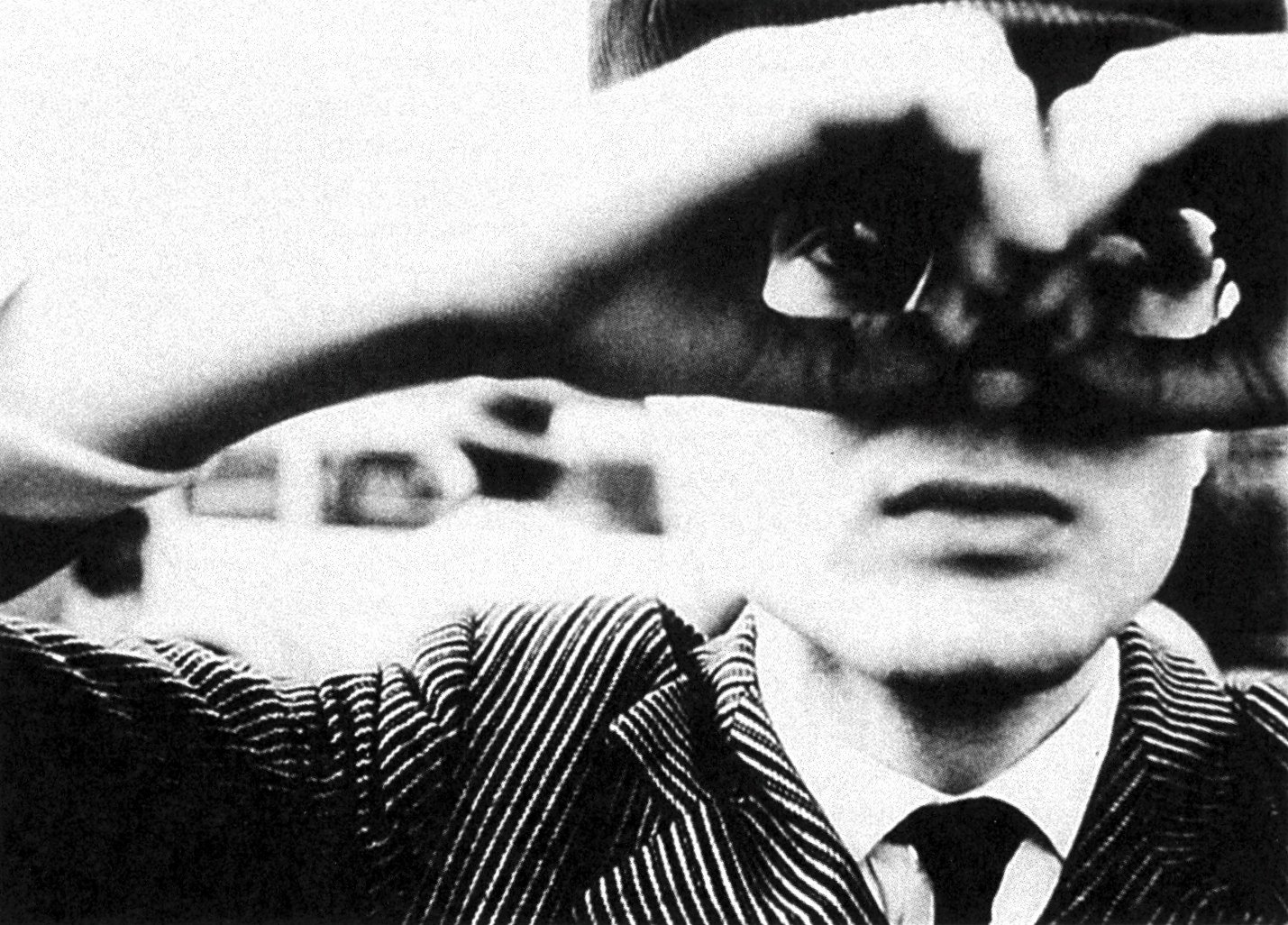
___________
Adebar (1957)
‘Kubelka’s achievement is that he has taken Soviet montage one step further. While Eisenstein used shots as his basic units and edited them together in a pattern to make meanings, Kubelka has gone back to the individual still frame as the essence of cinema. The fact that a projected film consists of 24 still images per second serves as the basis for his art. This idea has different materializations in different Kubelka films. In Adebar, only certain shot lengths are used — 13, 26 and 52 frames — and the image material in the film is combined according to certain rules. For instance, there is a consistent alternation between positive and negative. The film’s images are extremely high contrast black-and-white shots of dancing figures; the images are stripped down to their black-and-white essentials so that they can be used in an almost terrifyingly precise construct of image, motion, and repeated sound.’ — Fred Camper
_____________
Schwechater (1958)
‘In 1957, Peter Kubelka was hired to make a short commercial for Scwechater beer. The beer company undoubtedly thought they were commissioning a film that would help them sell their beers; Kubelka had other ideas. He shot his film with a camera that did not even have a viewer, simply pointing it in the general direction of the action. He then took many months to edit his footage, while the company fumed and demanded a finished product. Finally he submitted a film, 90 seconds long, that featured extremely rapid cutting (cutting at the limits of most viewers’ perception) between images washed out almost to the point of abstraction — in black-and-white positive and negative and with red tint — of dimly visible people drinking beer and of the froth of beer seen in a fully abstract pattern. This ‘commercial’ may not have sold any beer in the twenty years since it was made, but I (as someone who hates beer) have vowed that if I’m ever in Austria I’ll drink some Swechater, in tribute to what I consider one of the most intense, most pure, and most perfect minutes of cinema anyone has ever achieved.’ — Fred Camper
_______________
Arnulf Rainer (1960)
‘Arnulf Rainer’s images are the most ´reducedª of all — this is a film composed entirely of frames of solid black and solid white which Kubelka strings together in lengths as long as 24 seconds and as short as a single frame. When he alternates between single black and white frames, a rapid flicker effect is produced, which is as close as Kubelka can come to the somewhat more rapid flicker of motion-picture projection; during the long sections of darkness one waits in nervous anticipation for the flicker to return, without knowing precisely which form it will take. But Arnulf Rainer is not merely a study of film rhythm and flicker. In reducing the cinema to its essentials, Kubelka has not stripped it of meaning, but rather made an object which has qualities so general as to suggest a variety of possible meanings, each touching on some essential aspect of existence.’ — Fred Camper
________________
Unsere Afrikareise (1966)
‘Kubelka’s most recent film before Pause! is Unsere Afrikareise, whose images are relatively conventional ´recordsª of a hunting-trip in Africa. The shooting records multiple ´systemsª — white hunters, natives, animals, natural objects, buildings — in a manner that preserves the individuality of each. At the same time, the editing of sound and image brings these systems into comparison and collision, producing a complex of multiple meanings, statements, ironies… I know of no other cinema like this. The ultimate precision, even fixity, that Kubelka’s films achieve frees them to become objects that have some of the complexity of nature itself — but they are films of a nature refined and defined, remade into a series of relationships. Those rare and miraculous moments in nature when the sun’s rays align themselves precisely with the edge of a rock or the space between two buildings, or when a pattern on sand or in clouds suddenly seems to take on some other aspect, animal or human, are parallelled in single events of a Kubelka film. The whole film is forged out of so many such precisions with an ecstatic compression possible only in cinema.’ — Fred Camper
_______________
Pause! (1977)
‘His triumph is really quadruple. First triumph: Pause! is an ecstatic work. Second triumph: With the perfection and intensity of his work he dissolved the audience’s swollen-up expectations which had grown out of normal proportions during the ten years of waiting. He enabled us to receive his new work in its newborn nakedness. Third triumph: His dissolving of Arnulf Rainer. Arnulf Rainer himself is an artist of unique originality and intensity. His face art, which constitutes the source of imagery in Pause!, is a chapter of modern art itself. I have a particular aversion to film-makers who use other artists and their art as materials of their films. These films never transcend their sources. During the first few images of Pause! I had an existential fear. Kubelka had to consume and to transcend not only Arnulf Rainer but also — and this constitutes his fourth triumph — to transcend the entire genre of contemporary art known as face art. A few more images, and my heart regained itself and jumped into excitement: Both Rainer and Art disintegrated and became molecules, frames of movements and expressions, material at the disposal of the Muse of Cinema. I am not saying this to diminish the person and art of Arnulf Rainer: His own greatness cannot be dissolved, in his art. But here we speak about the art of Peter Kubelka, and in a wokr of art, as in the heavens so on earth, there is only one God and Creator.’ — Jonas Mekas
part 1
___________
Film als Ereignis, Film als Sprache, Denken als Film (2003)
‘The only publicly available document of Peter Kubelka’s legendary “lecture performances” is entitled Film als Ereignis, Film als Sprache, Denken als Film (Film as Event, Film as Language, Thought as Film). The lecture was held on November 10, 2002 at the Austrian Film Museum, in the framework of the conference “Film/Thought”.’ — Film Museum
Excerpt
___________
Antiphon (2012)
‘It was meant to be the highlight of the London Film Festival´s Experimenta Weekend last October, but a broken projector prevented Austrian avant-gardist and experimental filmmaker Peter Kubelka from presenting his ambitious Monument Film project – a double projection of his works Antiphon (2012) and Arnulf Rainer (1960), back to back, side by side, as well as superimposed. Both works explore the four cinematographic elements – light and darkness, sound and silence – effectively stripping cinema down to its bare essentials as well as offering `a countermeasure to the dominating emotional motion picture´ (Jonas Mekas). What´s more, Antiphon literally presents the answer to Arnulf Rainer: what was white before is now black; where there was sound there is now silence. Monument Film is a response to what Kubelka describes as the `hostile takeover´ of analogue cinema technology by digital media, and hence might be best understood as a `last call to dogged resistance´. This month, Kubelka will be back in London to accomplish his endeavour, which he himself considers to be a culmination, the grand finale to his cinematic labors. Antiphon can only be screened in combination with Arnulf Rainer (= Monument Film).’ — Pamela Jahn
Antiphon, digitally recomposed by students of the academy of fine arts Vienna.
Peter Kubelka presenting Monument Film
PK documenting the installation component of the MONUMENT FILM
*
p.s. Hey. ** Nick Hudson, Hi, Nick. I’m doing good, how are you? Well, they’re escorts not slaves, but thanks. All credit to the particular dude. A few publishers have asked about compiling the escort and/or slave profiles into a book, but I don’t feel comfortable using the found photos, and I don’t think most of them work so well without the images. Your album’s out! I’ll get it obviously. Cool. We’re at the last stage of finishing the film, just some touches and little fixes left. It should be a done deal by month’s end. Heavy luck fighting that law, Jesus. Love from Paris which is very like itself as it always seems to be happily. xo, me. ** PL, I really enjoyed looking through the paste. It’s great. And, yeah, I look forward to seeing your drawings when you think the time has come. Um, I guess when I finish a book, I start thinking about whatever I want to write or do next, and I don’t really look back on it, although they always make you do readings when a book comes out, so I guess I end up having to recheck it. Usually I’m okay with the book but mostly thinking how I can do something better. Maybe you feel that way or something? Oh, shit, about the enlisting. That’s scary, to me at least. When I was 18 I had to sign up for the draft because the Vietnam war was going on. And they had a lottery, and I got picked and drafted. I was completely freaked out. My parents paid a doctor to give me a fake medical report that said I wasn’t fit enough, and that got me out of it, although I had to go to the draft center, and, if they hadn’t let me off, I would have been taken straight to boot camp. It was the scariest thing ever. Gosh, I so hope you can get out of that. No, I haven’t heard about the dead boys in the UK. The UK does seem to produce an inordinate number of serial killers. I’ll look into it. My week: hopefully organise finishing the film and work on the new script and, hm, I’m not sure yet. What’s yours looking like? Ditto on the great talking big time. ** Nasir, Well, hey there, man! And very happy birthday probably a day late. Do anything party-like? Things are basically okay with me. Ah, your fiction piece! I’m excited to read it! Great! Everyone, the mighty and ultra-talented Nasir has a new short fiction piece called ‘Goatsucker’ published on the Misery Tourism site, and it’s readable, and you most highly encouraged to hit this link and delve deep. I sure will be. Oh, gosh, thank for saying that, my friend. Enjoy, feel proud and ultra-happy, and I’ll make haste to see what the fuss is about. ** _Black_Acrylic, PT will finally grace my hopefully non-taxed time and brain body today. Stressful about Leeds re: the league position. Serious conceptual votive candles lit a la fireworks for your guys and you. ** Steve, Hi. The film’s description text doesn’t indicate that it’s a queer film, and I don’t know if the curators knew who I am or had any expectations re: the film’s bent due to my involvement, so I don’t know. Smoking ‘T’ means smoking Tina aka crystal meth, I’m pretty sure. Everyone, Here are Steve’s reviews of Imtiaz Ali’s AMAR SINGH CHAMKILA, there, and Couch Slut’s YOU COULD DO IT TONIGHT, there. Huh, curious about ‘Sasquatch Sunset’. I’ll give it a soap2day spin. ** Dominik, Hi!!! There used to be really good, daring film festivals. There was a big, great one in LA called Filmex when I was young. I don’t know what happened. Greed, surely. Ha ha, Dark-Game was a roost ruler, it’s true. Love making guacamole not turn brown so rapidly but without adding unhealthy preservatives, G. ** Joseph, Hey, Joseph. Yeah, he’s a poet, I agree. Every once in a while you get your slutty twink Emily Dickinson, and more often than one might think. Maybe there’s a message board for rock collectors where I can barge in and see if any of them want to wax poetic ‘on tape’. Me too, re: that gain-less love. I mean, hey, you and I write the things we write, and, I don’t know about you, but I’m guessing the actual gain from yours is as virtually nonexistent as it is from mine. Maybe that’s the key to our pleasant conversations? Great morning, if I’m assuming correctly. ** Charalampos, Hi. Happy to lift your mood, obviously. Zac and I don’t know what our new film is about yet. But we will. And you will later on. Good vibes from somewhere safe from the rain. ** Harper, Hi. Ah, gotcha. ‘Never Let Me Go’ sounds insane. Curious that it was assigned to you. Strange brain behind that decision. Not necessarily bad strange. Anyway, it does seem ripe for an essay, and your chosen title is click bait-y in the right away, at least from far off where I am. I’m sure if you went kitsch it was Sirkian/Fassbinderian at the very least. Head high. ** politekid, Hi! Functioning is the entrance to everything great that I can think of. Even to great dysfunction, if such a thing is possible. The original horrible producer is still as horrible as ever, but now our newer, seemingly saviour-like producer is starting to show signs of horribleness. This film is cursed, I swear. Here’s what those stadiums down the street from me will supposedly look like. Right now they’re still just a bunch of metal poles and things, which is much more attractive. I’m the same re: construction. Zac too. We took a tour of the big Paris cement making factory last year, and it was fascinating, I swear. Curious: that Jelinek. I’ll try to find a copy and page through it. Yesterday? Not so much. Some film-related stress about getting something we need to get done done. Wrote a bit. Read more of a book-to-be that I agreed to blurb because the blurb is due pronto. That’s pretty much it. What about you re: today? I hope it provided time to do exactly what you most would close your eyes and wish was at your fingertips. ** Gus Cali Girls, Hey, Gus! Great to see you, pal! We’re right at the finish line with the film. Just a little bit left to polish. Thanks about Cannes. We were 90% sure we’d get rejected, so it’s okay. What projects are you working on? What kind of place are you looking re: the cohabitation? Congrats about that, btw. Good you mentioned it because I just checked my email, and there’s one from you in my Spam folder (?!) which I rescued and will open and read post-haste. Obviously happy that you’ve gotten into Clementi, big hero of mine, as you no doubt know. Have you watched the wild films he directed. They’re pretty amazing. So nice to see you! ** Justin D, Hi, Justin. Oh, me too. When I saw that couplet, I was, like, ‘ooh’, and dwelled within its mysterious, precise confines for quite some time. My favorite writing is precise and forever confusing to me. It’s the best. I aspire to that. So, yeah, high five. Oh, you should come to Paris. I’ll show you the local interesting whatevers. Thanks about ‘Ugly Man’. That ‘rimming’ incident its a true story if that wasn’t clear. Memorable. Have a similarly sublime day! ** Right. Today, if you like, you can spend some time exploring why Peter Kubelka is such an important experimental filmmaker despite only having made 9 films in his long life. See you tomorrow.




 Now available in North America
Now available in North America 
Hi, Dennis. Vietnam? That’s rough. Very fortunate about the fake medical report. The army doesn’t do anything here in Brazil, they just paint curbs and learn how to use guns, but it’s a very humiliating process because they want to be taken seriously. Yeah, Britain has this inclination to serial killers, but I still think Serbia is the creepiest country in the world. My week doesn’t hold much, my professors are protesting for more money so they shut the college and I’m not having any classes. I think I’ll use it to watch as many movies as I can. Yesterday I watched ‘Hell-Bound Train’ ane ‘One From The Heart’. And I’m thinking about going out with a online colleague to buy new clothes. I’m living like a rom-com girl. By the way, I heard you made a tale about Thurston Moore getting killed by a fan but I couldn’t find it, where can I read it?
Peter Kubelka is a new name to me but I like the cut of his jib. Not the sort of thing freely available via DVD but I’ll be plundring YouTube to check out his work.
Hi!!
Greed, probably, and lack of funding. That seems to be the cause of death in a lot of cases… I googled Filmex, and yes, it looks like the kind of festival I meant. Damn.
Yes! Yes, love, please do that. Guacamole and eggplant cream – they both turn brown so fast, and then they look so disgusting… Love may be dumb but at least he has no gag reflex, Od.
Hey Dennis,
Excited for you polish of the film! It”ll be such a joy to finally see the finished thing.
My projects are mostly at this point applying for grants to get money (yawn), but I’m reading a new poem I wrote about Clementi at a thing tonight so there’s that, I just won a postgrad prize for an essay about Darby Crash and Friedkin’s Cruising film so I’ll be editing that, and I’m also just trying to write fiction whenever I have free time ! And with housing, the Sydney market is so intense, just trying to find a cheap place we can afford to pay rent on lol
Clementi is so incredible, the way he seems to have worked with every superstar euro arthouse director of the late 20th century is wild! He’s so singular, I can’t think of anyone who has the raw onscreen charisma he does, which is always so malleable but always so him. It actually kinda feels like a disservice trying to speak about him so casually! The only of his directorial works I’ve seen so far is Visa de Censure no X which was suitably trippy. I’m deff going to keep digging, but I’m also really itching to get a copy of his book about prison since it’s been translated to English (as I’m pretty sure I learnt via the blog).
Glad you caught my email from spam too, I really appreciate that!
Hopefully hear from you soon and sending best,
Gus
I usually confuse Kubelka with the composer Peter Ruzicka, haha. Those Austrian —-ka’s. Adebar and Schwechater are really lovely, will definitely check out more. (That Fred Camper blurb for Schwechater is breathtakingly hyperbolic; I almost skipped the clip because it’s “one of the most… perfect minutes of cinema”.)
My vote yesterday was for the “punk remains punk” boy, of course.
I’m a huge fan of Taking Tiger Mountain by Strategy. I would have preferred a lighter touch than Enorchestra’s. They had 3 guitars (!), bass, drums, and a female rock-style vocalist who didn’t have that much sonic range. The busy, more rocking songs worked best, and were great fun. But not so much the quieter songs with the irony turned up to 11.
Bill
Stop me if you’ve heard this before, but I don’t make a thing out of my birthday. The wishes are pleasant though, of course. And thanks for the kind words!
So yeah I spent my birthday at work and then back to writing/fidgeting with a guitar. How did you spend april 16th, which I’m assuming is someone else’s birthday?
Can’t wait to hear what you think about the piece! I re-read it when it got published, and I’m happy I thought it was still good, mostly.
Thank you for your time in advance.
Dennis! Hahaha. Yeah, that tweet was pretty funny too. I think I’m gonna follow that guy. He’s got opinions, haha.
The party was really fun. My mom went and got to play some cornhole. Alex showed up and my friend Beth loved him. But everybody loves him, it seems. 😛
I was talking to Rigby and I’m thinking about making my way overseas in October. Alex is hoping to come with me. If he does, we’ll be doing a side trip to Paris and you’ll get to meet him if you’re there. Now we just have to figure out how to get him over there without his parents freaking out. 😮 (Yeah, it’s a thing. They’d probably disown him and kick him out if they found out about us, sadly.)
Kubelka is my hero! I still remember where I was when I first saw Adebar and Schwechater – Dominic Angerame’s class at SFAI – and they opened up so much for me. What a lovely trip to be on today. Hope you are good, Dennis!
Love, B
Hey! The one comment thing worked. I think it might be a browser cache thing? I must confess I am by disposition something of a luddite; I read that one Walter Benjamin essay too early for it not to catch on. Sometimes I write physical letters to people I know to overcome that. The drag perfomance was very boring: a telephone mix (although I did like the opportunity to include the scene from Serial Mom).
“I was trained to be a diabetic and Latex alert dog for my previous sugardaddy who had a severe allergy. I still bark/panic when I see Latex, even balloons at a party. I’m actually quite good at it, unfortunately.” is maybe the funniest thing I’ve read all month, been thinking about it and giggling at odd times. Do you ever wonder what your description on a site like that would be and what reviews people would leave?
The two comment experiment is back on because this one doesn’t seem to have registered outside of this tab. I hope you’ll pardon my double commenting. I knew the Kubelka name sounded familiar… vaguely remember something from his sister.
Hi Dennis. I’m back to smoking finally, but I’m easing my way back in. Everyone around me thinks that I’m such an idiot for not taking this opportunity to quit but hey, I’m young. Funnily enough they’ve done this big vote in the UK today which means that if passed, nobody born after the year 2009 will ever be able to smoke, and I think they are going to raise the year by one every year. Hopefully I’ll be out of here by then, anyway.
I think the doctor was right about me being stressed but I was trying not to think about it, but I’ve been getting paranoid about the smallest things so I’m just going to accept it and see what happens.
Hiya buddy 🙂
Frankie says hi too she is sitting next to me. (The cat)
Gosh I just love having her around she makes home great!
Ex. I spent sunday night trying to relax/ watch tv on the couch and she curled up next to me. Dude she is so chunky and warm, like a living heating pack on your stomach.
Im thinking of entering this writing comp for short stories I think it would be a fun writing excersise while I get ready for school in the summer.
I think I will be going to Community college because I thought it would be cool to take classes in writing aswell as biology/geology.
I love em.
Ya know, I think my voice has grown a little deeper, but I cant really tell . You know, with testosterone and stuff. Then again I might just be catching something.
DO you like cooking? I was looking at this channel the other day with this lady who is a vegan cook
https://www.youtube.com/@TheKoreanVegan
I thought it would be cool in the future once im better and on my own yada yada to just live in a nice minimal home and learn new things ever day.
I actually have something else to ask but I’m tired andI have to keep this brief.
OH hahah just in time friankie is about rto jump on the bedx
Hi Dennis, didn’t get a chance to comment on yesterday’s post. I was busy driving from Memphis to New Orleans with my daughter to take a look at a few things before I make my final school decision. Long day lol.
Yeah DC is sort of like a tourist attraction, but so is N.O., isn’t it? Kinda funny. How is Paris by the way? (You do live there right?) I’ve never been to Europe.
This is the first I’ve heard of Kubelka, but then again I don’t watch many films. I’m intrigued though! I’m sympathetic to his statements on digital media.
I didn’t realize you and O’Malley were friends. That’s very cool. Sounds like you have a pretty good source for metal then! A few recommendations: Ultra Silvam – Sanctity of Death, Mitochondrion – Parasignosis, Dryad – The Abyssal Plain, Funereal Presence – The Archer Takes Aim, Primordial Serpent – Hail the Serpent (EP), and Death Worship – Extermination Mass (EP). Hopefully at least a couple of those will be new to you. Obligatory mentions of more obvious bands Sacramentum, Sargeist, Sigh, and Craft just in case you aren’t already familiar. Until next time!